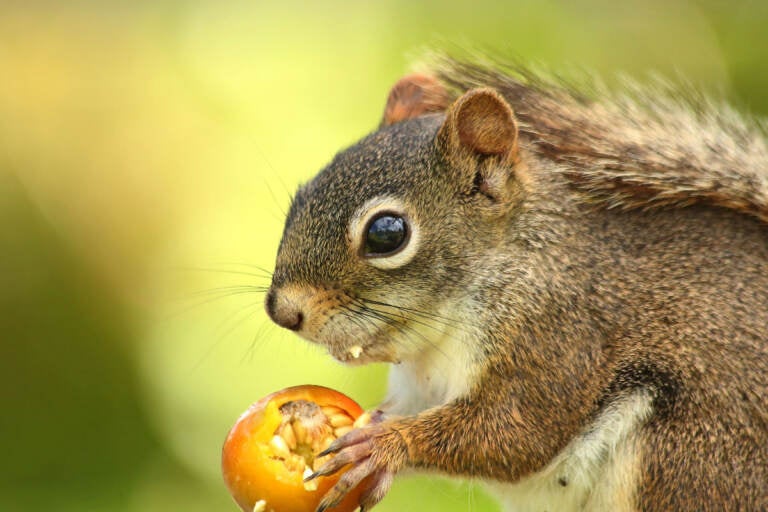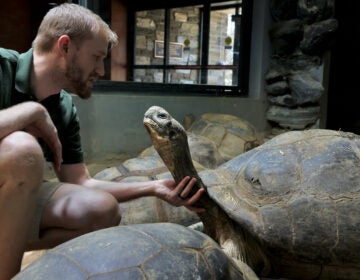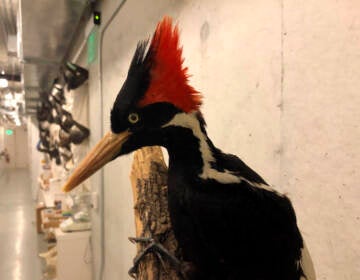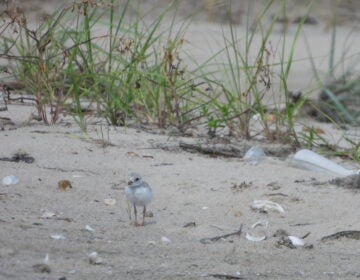How we decide which animals are pests, and why
Even for the most devoted animal lover among us, there are animals that we hate and try to avoid, or kill: rats, mice, pigeons, invasive snakes. We call these animals pests.
Listen 22:01
Science writer Bethany Brookshire has an enemy who lives in her backyard: a gray squirrel she named “Kevin.” In her new book, she says we can rethink our relationships with animals we call “pests” like squirrels, rats, pigeons, pythons and more. (Gael Dupont-langevin)
This story is from The Pulse, a weekly health and science podcast.
Find it on Apple Podcasts, Spotify, or wherever you get your podcasts.
Even for the most devoted animal lover among us, there are animals that we hate and try to avoid, or kill: rats, mice, pigeons, invasive snakes. We call these animals pests.
Science journalist Bethany Brookshire views these maligned animals differently and spoke to host Maiken Scott about her recent book, “Pests: How Humans Create Animal Villains.”
Interview highlights
What makes an animal a pest?
“That’s different from, say, predators … It’s different from pets. It’s different from wildlife … We think of pests in the same way we think of weeds. Weeds are plants that are out of place and pests are animals that are out of place. But that then begs the question: Who determines what an animal’s place is, right? And the answer to that is we do. Pest is a very subjective term for an animal that bothers us, an animal that is doing something we don’t think that animal should be doing. And what’s especially wild is that the animals themselves are just doing what they need to do. They’re just living their lives.”
Inside an Indian temple where people worship rats
“The worshipers of these rats are not worshiping rats. They’re worshiping humans that have been reincarnated into the bodies of rats. And so that’s what’s really fascinating is that these rats are not seen as rats. They are not seen as pests or vermin. And when I talked to some of the worshipers at that temple, I said, ‘Oh, does this change what happens if you see a rat in your kitchen?’ And one of my sources said, ‘Oh, I hate I hate rats in my kitchen. They’re absolutely disgusting.’ So, it’s about context. The rats in the temple are not rats. They are reincarnated people. The rats in his kitchen. Those are rats. And those are pests.”
How scientist Clarence Little founded the world’s largest seller of lab mice
“In one of his articles that he actually wrote for Scientific American, he said, ‘Do you like mice? Of course, you don’t.’ And then he talked about the use of mice as scientific models. And he was selling the mouse to the American public as a laboratory model because it’s something we could use to study humans. But it was also something that we didn’t care about — that we hated. And that allowed us to use these animals the way that we use them today … I like to think that they’re useful because they’re just human enough to not be human at all.”
Why pigeons are her favorite pest
“They highlight our own hypocrisy so well because the reality is that every pigeon in America, every pigeon in Europe, every pigeon, pretty much anywhere except the Middle East, is there because we brought it there, because we used to value the pigeon. We domesticated the pigeon around 5,000 years ago and we did it because pigeons are delicious. Their poop makes excellent fertilizer. And pigeons have this amazing thing they do — which is they go out from their roost every day, they eat, and then they go exactly back to where they came from. Pigeons do not get lost, so they made great food, they made great fertilizer, and they made excellent messengers. And we bred these animals and valued them for millennia. And then, we developed the telephone, and chemical fertilizer, and chicken. And the pigeon lost its value. And it’s really fascinating to see over time, as the pigeon lost its value, it continued doing what the pigeon has always done, right? It went out. It fed itself. It came back home. But now, we have no use for them. And now we hate them. And it’s so sad to see how quickly we forget how valuable these animals once were.”
How humans can live with pests
“Pests are a matter of perspective. We create every single pest we have because pests are about what we want and what we believe about our environments … We don’t have to live this way, right? We created pests. We can destroy them too. And we don’t need to destroy them by going out and killing them all. We can change what we call pests by changing our perspective, by changing the way we live with these animals. Do we really need to eradicate all the pigeons? Or do we need to change how we deal with our trash? Do we need to go poisoning rats? Or do we need to change our sanitation, right? When we have problems with animals, we’re very quick to blame the animal. But we could also look to our own behavior and change how we think and how we act.”
WHYY is your source for fact-based, in-depth journalism and information. As a nonprofit organization, we rely on financial support from readers like you. Please give today.







